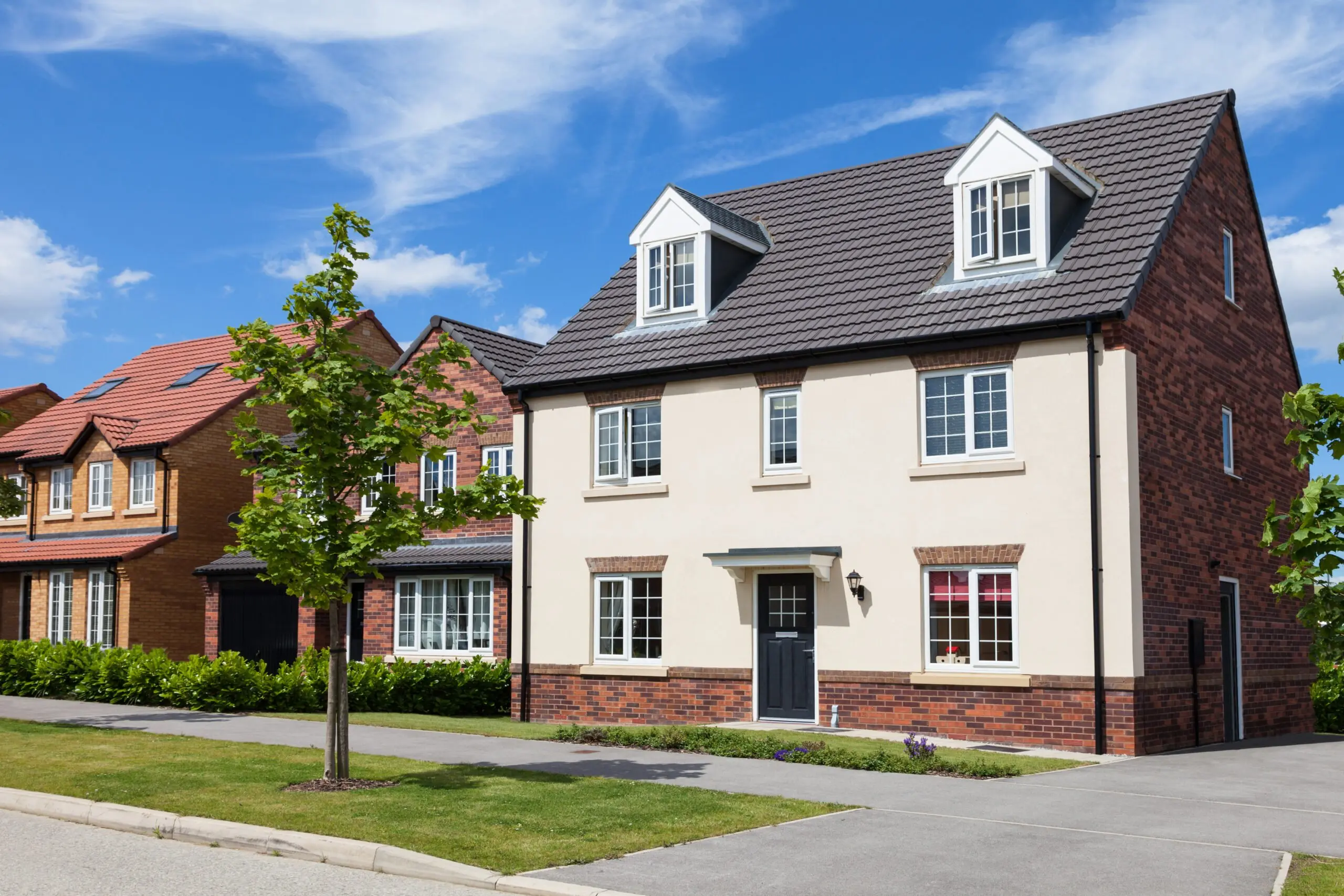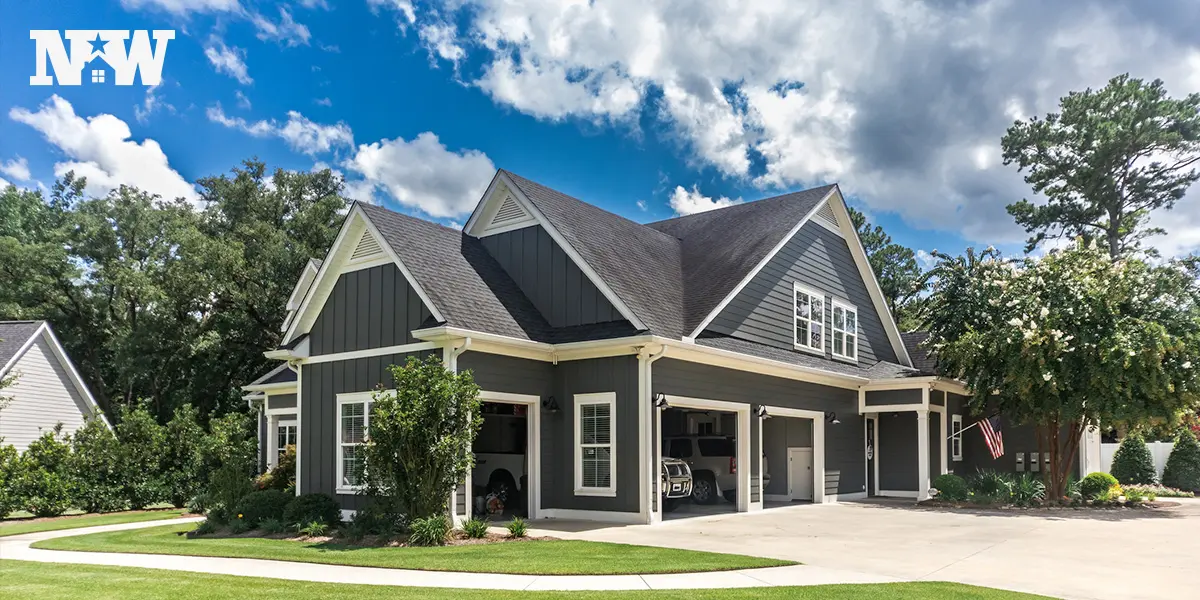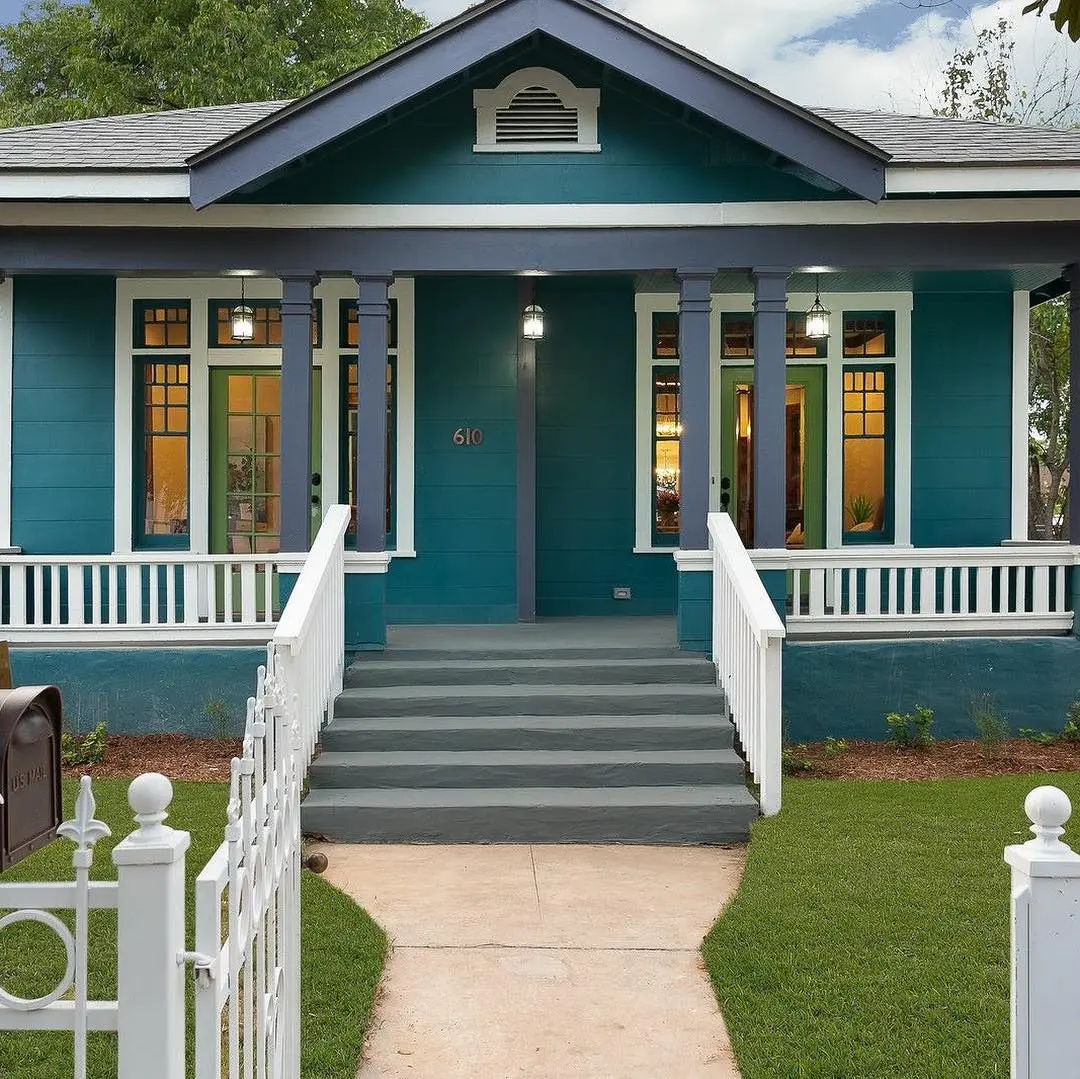If you’re new to the real estate investing world, you may be asking what is a good cap rate and why is it so important. Accurately calculating your capitalization rate is crucial if you want to establish a successful real estate portfolio.
When comparing properties in high- and low-demand locations, you may wonder what the difference is between a cap rate and other methods of calculating return on investment (ROI), such as cash flow and cash return, and why the cap rate is the golden rule for rental properties.
What Is Cap Rate?
The capitalization rate, or cap rate, is the most reliable method for determining whether or not a property is worth the investment by evaluating its potential ROI. Although there is always some room for error, this rate provides an accurate assessment of future profits or losses should you choose to pursue the property.
In real estate, the cap rate is the yield on an investment property over a year’s period, considering it was bought with cash rather than financed. However, despite its gold standard status for evaluating a property’s potential, it should be utilized in combination with other measures and supporting data to reduce the investment’s overall risk.
Why Does It Matter for Investors?
Cap rate is a foundational standard for investors, allowing them to compare properties and evaluate how much money an investment may yield. It can help investors like you gain insight into a property and help you make a more informed decision.
Here are the benefits of understanding the cap rate:
- Mitigate the risk of an investment property
- ROI of a potential investment property
- Compare various rental properties to one another before pulling the trigger
- How long will it take to recover the property’s initial investment
How to Interpret Cap Rate
The cap rate tells you the length of time it will take to recover the amount invested in the property. A higher cap rate signifies greater risk while a lower cap rate indicates a low investment risk.
Example: At a 10% cap rate, it will take about 10 years to make back your initial investment.
Comparing cap rates across a portfolio of properties or across several time periods for the same property will also showcase different risk levels. This means that properties with greater net operating income (NOI) and lower value in different locations will have higher cap rates and vice versa.
Here’s what it means:
Consider owning a property in a city and one on its outskirts, where all aspects of the property are the same except the location. While rental revenue from the city center property will be larger than that of the outlying property, those gains will be substantially offset by the higher operating and tax expenses.
As a result, the cap rate for the property in the city would be higher than that of the property in the suburbs because of its greater market value. While the outlying location property has a lower cap rate, it has a higher valuation and so represents a lower-risk opportunity to generate a return on investment (ROI) than does the more central location.
It’s only natural to want to invest in a home close to the city’s heart, but this isn’t always the best move since it doesn’t clearly indicate the risks associated with the potential ROI.
What Is a Good Cap Rate for Rental Property?
While there is no magic number for the cap rate, you should consider the risks associated with each investment opportunity. The higher the cap rate, the greater the (ROI), but the greater the potential risk. A lower cap rate, on the other hand, signals lesser profits but also reduced risks.
Is a Higher or Lower Capitalization Rate Better?
Many experts consider a cap rate between 5% and 10% good, while a cap rate below 4% signals less risk but a longer period to recoup an investment.
However, suppose you want to recover your investment rate with a higher cap rate quickly. In that case, you will also have to expose yourself to more risk, so it all boils down to how much risk you are ready to face. Don’t put yourself in a position where you have to take on more risk than you feel you can manage.
Is 6% A Good Cap Rate?
“Good,” as we’ve established, depends on the investor. This means that if your cap rate is low (below 5%), your investment is less risky, and you have less of a risk of losing money. If your cap rate is high (7% or more), your investment is risky, and you have an increased risk of losing money.
A median risk of 6% suggests you have a median risk of losing money and should explore the specific risk factors more thoroughly.
Is 3% A Good Cap Rate?
The property is considered low risk and high value with a cap rate of less than 5%. However, you should analyze the precise risks involved to see if it’s a good deal for you.
Which Factors Influence a Good Cap Rate?
There are three major factors influencing cap rates:
- Macro-level economics and demographics: Especially critical in large cities with a substantial influx of people and a corresponding high turnover of tenants but lacking new construction and housing shortages. As a result of the increased demand and reduced risk associated with purchasing property in a major metropolitan area, the capitalization rate for such an investment would be quite low.
- Micro-level market influences: Real estate buildings are organized into three classes (A, B, C) based on location and condition. Here, class A properties are the newest, most desirable, whereas Class C properties are the least desirable in terms of location and quality. Here, cap rates tend to rise the farther down a property class, demonstrating that you can still buy the property but must weigh the potential risks involved.
- Type of property: A residential apartment building in a major city may have a lower cap rate than a retail shop in the same location, depending on the market conditions. This is due to the dangers faced by shops in light of the pandemic and possible market downturn.
Though these are the 3 major factors influencing the cap rate, there’s more to it than many investors think.
Here are other variables affecting the cap rate:
- Rental income (current)
- Rent pro forma (future rent)
- Risk tolerance
- Property appreciation in the future
- Local property market
- Amount of money invested, especially renovations which can make a big difference in the cap rate due to its now higher marketability
How to Calculate Cap Rate: Capitalization Rate Formula
The capitalization rate is determined by dividing a property’s Net Operating Income (NOI) by its purchase price (and upfront repairs and expenses).
Here’s how it’s calculated:
NOI = Gross rental income – Vacancy/Taxes/Insurance/Maintenance//Property Management fees/Other Expenses
Cap Rate = NOI/Purchase price x 100%
The cap rate is a projected rate of return based on the property’s ability to generate for you. In contrast, NOI represents the property’s yearly income after subtracting all costs (except the mortgage payment).
Can Cap Rate Change?
Variables like the cap rate are subject to alter over time due to changes in the factors discussed above. One way to reduce the cap rate is to enhance NOI by upgrading and renovating a property to improve its market value and rental revenue (thereby also increasing the NOI).
While it’s true that adequate planning and execution are necessary for optimal property performance, many investors fail to fully appreciate the extent to which they are in charge of their investment results.
What Happens to Cap Rates When Interest Rates Rise?
A property that, perhaps, five years ago would have had a low cap rate due to low-interest rates may now have a higher one due to the increased interest rates. In this case, the higher the interest rate climbs, the greater the negative leverage and the risk of maintaining a property. Historically, cap rates have risen in tandem with interest rates, and a corresponding increase can only reduce this risk in returns, usually by increasing rent.
Do Cap Rates Rise With Inflation?
Because inflation tends to increase NOI, it can put upward pressure on cap rates. However, rising interest rates may start to push cap rates down. According to Lawrence Yun, chief economist at the National Association of Realtors (NAR), cap rates cannot match up with higher borrowing costs, forcing cap rates and property values to adjust downwards.
The only option to compensate for the rising risk and cap rate is to boost returns, usually by increasing rents.
The Gordon Model for Cap Rates
The intrinsic value of a company’s stock price, dependent on the market conditions, may be determined using the Gordon Growth Model, also known as the Dividend Discount Model (DDM).
(Required Rate of Return – Expected Growth Rate) = Expected Cash Flow (NOI) / Asset Value (Purchase Price)
The capitalization rate is calculated by subtracting the anticipated rate of return from the projected growth rate, using the predicted cash flow statements for the NOI and the asset value for the purchase price.
What Is Cash Flow?
Cash flow is a term that is frequently used in the real estate investing business to define the profit that remains at the end of the month after all expenses have been deducted. To put it another way, you take your expected monthly rent revenue and deduct all costs, such as loan repayments, maintenance, and utilities.
The resulting number is your expected monthly cash flow, which will most likely change due to variables such as vacancies and other unanticipated costs. However, it will provide you with a rough indication of prospective returns before signing on the signed line.
What Is Internal Rate of Return (IRR)?
The Internal Rate of Return measures the profitability of a buy-and-hold investment. It is calculated by dividing the projected cash flow and property appreciation by the estimated holding duration. The outcome will reflect the property’s overall value based on how much you anticipate earning from renting and selling the property in the future.
Even though it’s impossible to forecast how much a property will sell for in the future or how much it will appreciate, the IRR is used in combination with other formulas to examine a transaction prior to its closing.
What Is Cash-On-Cash Return Exactly?
A cash-on-cash return is a measure of the amount of cash flow relative to the amount of cash invested in a property and computed pre-tax. Though, it only accounts for the investment’s performance for the most recent period (usually a year) rather than the full-time it has been held.
In short: you divide the net cash flow for the year by the amount of cash invested.
What Is the Difference Between the Capitalization Rate and Return on Investment?
The primary distinction between the cap rate and the return on investment is how each metric is used. While ROI is used to provide an objective proportion of the profit you may anticipate from an investment, it’s used to compare two entirely different kinds of properties, such as rental and commercial properties. In contrast, the cap rate is used to compare highly identical assets, such as two rental properties.
When Is Knowing the Cap Rate Helpful?
For investors, cap rates are useful for comparing the following types of rental properties where annual net operating income can be used:
- Multifamily rental properties
- Apartment buildings
- Single-family rental homes
- Rental townhouses
- Commercial real estate
With any of these properties, you may utilize cap rates to examine the initial yield of an investment property, where the expected net income is compared to the purchase price, in order to assess the potential profitability. Additionally, cap rates can offer you an idea of how long it will take to recoup your initial investment and the risk involved with the property.
When Is Knowing the Cap Rate Not So Helpful?
While cap rates are incredibly important when evaluating investment properties prior to purchase, it is also crucial to understand when they are less useful. As cap rates are based on a property’s annual net revenue, some sorts of properties are inapplicable:
- Raw land
- Fix-and-flip properties
- Short-term rentals (in some cases)
What Is a Good Cap Rate for Multifamily Properties?
With “good” cap rates typically ranging from 5% to 10%, determining what a “good” cap rate would be for this specific property depends on a number of criteria, such as:
- Market cycle: How many rental apartments are available in that area? This will offer you a better grasp of the property’s market position and how to calculate risk-reward ratios.
- Geographical location: Location can significantly impact a property’s desirability, as properties closer to major employment, entertainment, or lifestyle hubs will often have higher rentals due to their enhanced desirability. At the same time, properties in rural locations will have less appeal and a higher capitalization rate.
- Property condition: The state of a property will reveal much about its desirability, especially since properties are categorized into three categories according to their age (A-C). Class A properties are less than 10 years old, whereas class C properties are 30 years or older and require greater upkeep, which might increase overall maintenance costs and affect your cap rate.
- Supply/Demand of rental units in that particular region: A property located in a high-demand area with higher employment rates will be closely connected with cap rate compressions due to its demand.
- Tenant turnover rates: With a high turnover rate, vacancies may increase along with your cap rates as a result of the additional costs associated with maintaining vacant apartments. Due to the enhanced creditworthiness of the occupants and the decreased market risk, a property with predominantly high household incomes will typically have a lower capitalization rate.
If your rental property is located in an area with limited demand, such as rural areas, your cap rate will likely be higher.
What Is a Good Cap Rate for Airbnb?
If you’re an investor trying to strike a balance between your desired rate of return and the level of risk you’re willing to take, the temptation to pursue ever-greater returns likely means you’ll be taking on more of the latter. Despite the fact that many seasoned investors are content with cap rates between 5% and 8%, you will need to take a closer look at the risk factors, especially when it comes to short-term rentals like Airbnb.
Here are factors to consider with Airbnb rentals:
- Rental income
- Marketing costs
- Restocking supplies
- Occupancy rates
- Vacancies
- Utilities
- Airbnb property management (if applicable)
- Cleaning costs
- Maintenance and repair
- HOA fees (if applicable)
- Property insurance and taxes
With so many additional elements to consider, investing in short-term rental properties can quickly become complicated, yet, cap rates can paint a comprehensive picture and predict your return.
Although short-term rentals are typically not ideal for cap rates, it is still possible to use the original cap rate formula:
Cap rate = (Net Operating Income/Property Purchase Price) x 100%
Here, NOI is calculated by deducting the annual operational expenses (which do not include financing costs) from the gross annual rental income.
Will Cap Rates Go Up in 2022?
At the beginning of 2022, many buyers took advantage of the market and invested heavily, with multi-tenant retail rates averaging 6%. However, as the year proceeded, a shortage of quality products on the market formed, and conditions softened, with interest rates also rising. CBRE conducted a Cap Rate Survey, and the results indicated a decline in cap rates for the fourth quarter of 2022. However, cap rates could increase in the first quarter of 2023 as a result of rising interest rates and inflation.
Will Cap Rates Go Up in 2023?
Despite being lower in 2022 than they have been any year since 2008, this might rapidly alter if current predictions prove accurate. Recent forecasts have shown an increase in cap rates by the end of 2022, and the beginning of 2023 as inflation rates remain high, and the Ukraine war continues to be an important factor. Historically speaking, it will be important to monitor whether property values fall due to the unexpected shifts in the economy and loan market.
Final Thoughts About Cap Rates
Cap rates illustrate the lucrative potential of commercial rental investment assets, while the rate itself might be interpreted as a measure of risk. Although the cap rates suggest a substantial return on investment, many other factors and variables must be taken into account before making a final decision. Particularly as a novice investor, you need to consider not only the risk and potential reward but also all the other crucial criteria, such as ROI, which can vary greatly from property to property.
Although a cap rate for an investment property may seem like a straightforward number, it carries a significant weight that depends on you – so, what is a good cap rate for you? How much risk are you willing to take? Or rather, how much are you able to handle?
New Western helps distressed home sellers while providing investors with new opportunities. Investors can join our national marketplace of over 100,000 real estate investors who’ve bought and sold more than $12 billion in properties since 2008. By becoming a New Western-approved investor, we’ll take care of finding and clearing the best investment properties in the market for you.
Are you ready to explore new investment strategies? Fill out the form to see if you qualify and one of our agents will reach out to you within 48 hours.







